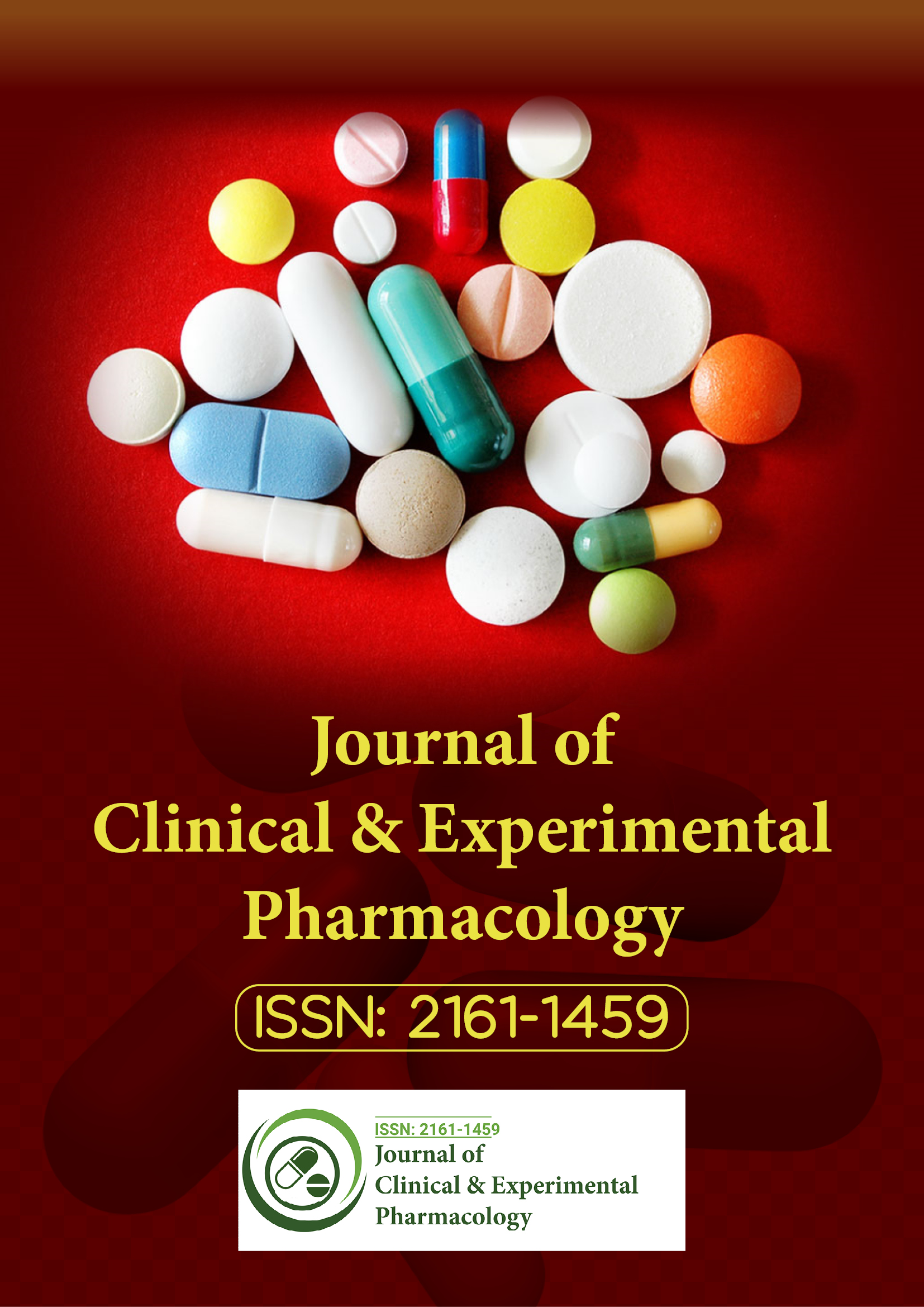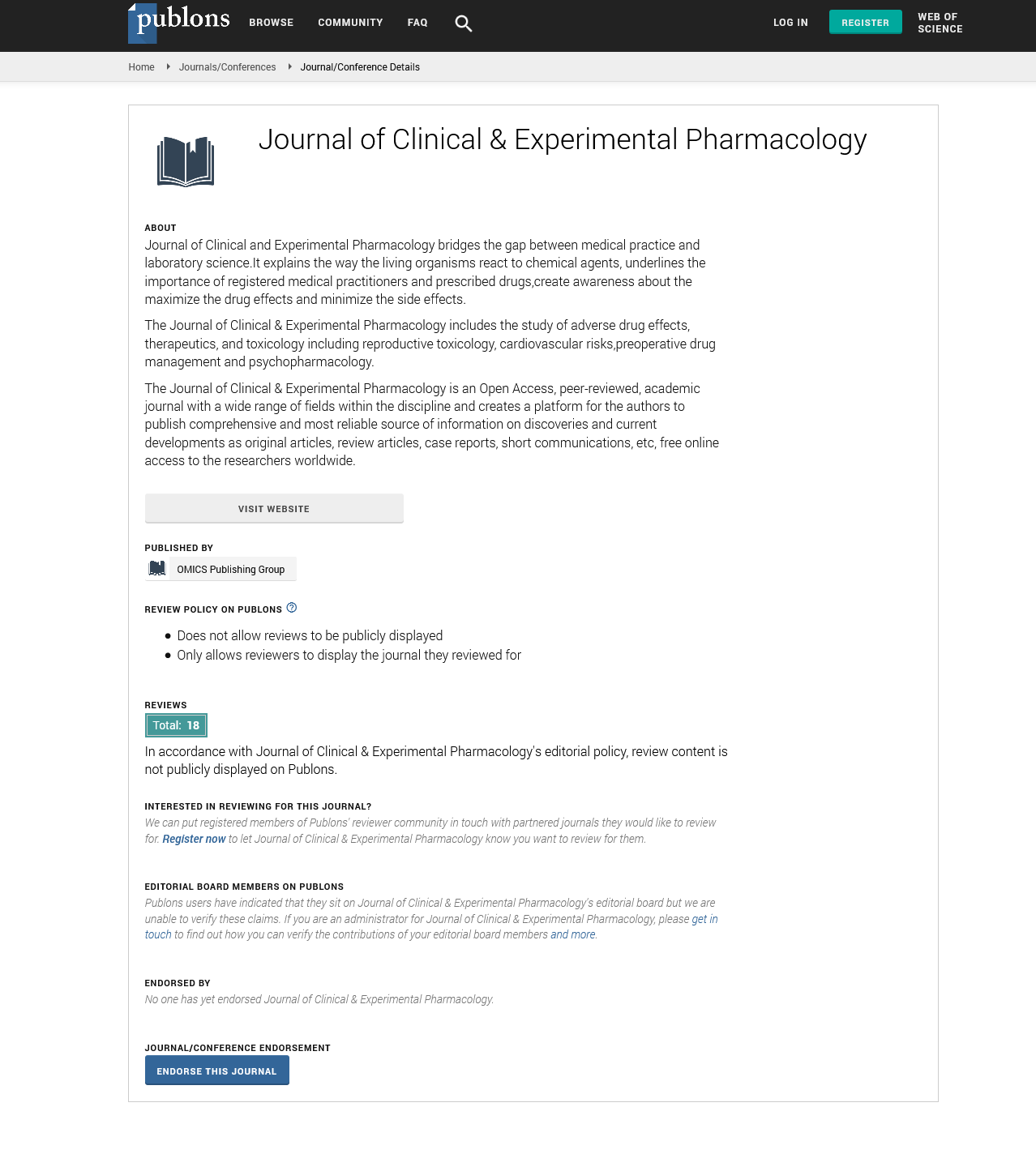Indexed In
- Open J Gate
- Genamics JournalSeek
- China National Knowledge Infrastructure (CNKI)
- Ulrich's Periodicals Directory
- RefSeek
- Hamdard University
- EBSCO A-Z
- OCLC- WorldCat
- Publons
- Google Scholar
Useful Links
Share This Page
Journal Flyer

Open Access Journals
- Agri and Aquaculture
- Biochemistry
- Bioinformatics & Systems Biology
- Business & Management
- Chemistry
- Clinical Sciences
- Engineering
- Food & Nutrition
- General Science
- Genetics & Molecular Biology
- Immunology & Microbiology
- Medical Sciences
- Neuroscience & Psychology
- Nursing & Health Care
- Pharmaceutical Sciences
A toxicogenomic study of Carboplatin in Saccharomyces cerevisiae: The involvement of hur and cullins in response to this antitumor drug
World Congress on Pharmacology
July 20-22, 2015 Brisbane, Australia
Gisele Monteiro de Souza
Scientific Tracks Abstracts: Clin Exp Pharmacol
Abstract:
Carboplatin is a derivative of cisplatin, characterized by its ability to generate DNA lesions through the formation of adducts with platinum. Carboplatin was approved by the FDA in the 1980s and since then it has been widely used in the treatment of several types of tumors. In 2008, Hillenmeyer et al. published a wide toxicogenomic study of the yeast Saccharomyces cerevisiae, characterizing the fitness defect of this model cell when challenged against a large library of different chemical agents, including carboplatin. Using the results of this study as a preliminary guide, 53 yeast mutant strains from the Yeast Knockout (YKO) collection were selected and analyzed individually regarding their cell viability and growth ratio when carboplatin was present in the culture media. Thirty-four mutant strains were responsive to carboplatin treatment; among them 21 possess 88 human homolog genes. Focusing on the function of these human homologs, results showed an enrichment of proteins undertaking a physical interaction with cullins 1, 2 and 3 or regulated by HuR (ELAV1). Cullins are proteins that need to undertake a posttranslation modification called NEDDylation to be active. Recent works have demonstrated that NEDDylation of HuR leads to its stabilization.HuR is a predictive marker of gemcitabine response and it has recently been demonstrated that cells treated with carboplatin possess an accumulation of cytoplasmic HuR. Additionally, inhibition of this pathway overcomes cisplatin resistance. The results suggest that HuR and cullins are involved in the cell response to carboplatin through the NEDDylation pathway. Upcoming experimentation with a NEDDylation inhibitor will be carried out on a human ovarian cancer cell line to further test this hypothesis.
Biography :
Gisele Monteiro de Souza has completed her PhD at the age of 27 years from University de Sao Paulo and postdoctoral studies from the same University. Now, she is a Professor of pharmaceutical biotechnology at Faculty of Pharmaceutical Sciences (FCF/USP) and the vice-coordinator of the graduate course in biochemicalpharmaceutical technology. She has published more than 20 papers in reputed journals and serving as an Associate Editor of Brazilian Journal of Microbiology. She has received 10 scientific awards, including internationals. The main scientific interest is the study of molecular targets involved in cell response to antitumor drugs and the engineering of proteins used as biopharmaceuticals, such as asparaginase.

